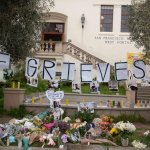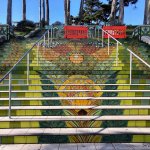Speak out at City Hall on April 16 for speed cameras and more actions to #SlowOurStreets
At long last, speed cameras, a proven, lifesaving technology is coming to our very own streets. Here in San Francisco, the #1 cause of severe and fatal traffic crashes continues to be speeding.
On the afternoon of Tuesday, April 16, the SFMTA Board will vote on the speed camera locations, a crucial next step toward these being on our streets.
We invite you to join us at City Hall to give public comment in support of speed camera locations – and to ask for key actions to max out the potential of these 33 cameras.
We’ll share talking points and keep you posted on the agenda for the SFMTA Board meeting and the likely timing of this item to give public comment.
Key actions needed to amplify the effect of speed cameras
The speed camera pilot program has the potential to usher in a new era for safe speeds – and save countless lives.
The City must take additional actions at the same time that speed cameras launch so that driver behavior shifts at a much broader scale. Because we need drivers to slow down everywhere!
Walk SF believes the following actions would greatly amplify the effect of speed cameras:
1. Continue lowering speed limits on every eligible street in San Francisco, fast-tracking high-injury 30 MPH and 35 MPH streets for lower limits.
Research shows lowering speed limits is especially effective in bringing down the most dangerous, outlier speeds. SFMTA has already lowered speed limits on 44.2 miles of streets since January 2024 through the state law AB 43, which Walk SF helped pass in 2021. San Francisco will have the ability to lower speeds by 5 MPH on “safety corridors” (which the state is defining) this year.
2. Bring speed-slowing solutions to scale across the high-injury network, especially left turn calming, traffic light timing for safe speeds, and proactive installation of speed humps and cushions.
New York City now has left turn calming at 931 intersections, where it’s reduced pedestrian injuries by 20%. Left turn calming is inexpensive and easy to install. Rubber bumpers and/or posts are strategically placed in an intersection and to navigate these, drivers must slow down. Here in San Francisco, left-turning vehicles pose one of the biggest threats to pedestrians. But left turn calming is at only 35 intersections so far.
Meanwhile, the SFMTA has been a leader in setting traffic signal timing to encourage safe speeds. Lights can be set to a certain speed, such as 20 MPH, and then drivers going that speed are rewarded with a predictable, continuous green light (called a “green wave”). This is particularly effective in bringing down speeds. Every high-injury corridor that hasn’t had signals retimed for safe speeds needs these, starting with all one-way streets.
San Francisco has installed about 900 speed humps and about 300 speed cushions in the past 20 years. Boston recently retooled its approach in a way we think SFMTA could mimic. Boston now adds ‘vertical speed reducers’ where data show they’re needed and in support of a broader speed strategy – and does not take requests anymore. This “by right” approach means vertical speed reducers can be installed faster and more strategically.
3. Get the message across to drivers in many ways that San Francisco is a safe speeds city.
Why do drivers go slower? The biggest determinant is street design, from how wide and how many lanes there are, to solutions like those listed above (speed humps, left turn calming, traffic light timing, etc.)
Beyond that, drivers slow down because: 1) they don’t want to get a ticket; 2) driving norms nudge them in the right direction (human behavior is contagious); or 3) they understand the serious dangers of speeding.
The City is required to do a public education campaign in the 30 days before and after speed cameras are installed. But that should be just part of a broader campaign that influences drivers in the three ways listed above. We think a serious, savvy marketing campaign can help drivers understand the high stakes of high speeds, and also feel part of the solution.
In addition, speed signage near all entry points to the city, speed radar signs, and even billboards can help drivers to expect speed cameras in many places – and know that San Francisco enforces speeding – and this could boost better behavior.
The San Francisco Police Department also must focus their limited traffic enforcement capacity on dangerous speeding, and in a way that complements speed cameras. The SFPD data shows that speed enforcement citations have plummeted. For example, in September 2016, SFPD issued 1811 speeding citations citywide, when in September 2023, they issued 91 citywide. The SFPD will be sharing their revised traffic enforcement plan at a hearing on April 25.
Nothing matters more than speed when it comes to protecting all of us.
Do you support Walk SF’s #SlowOurStreets campaign? Chip in now.




